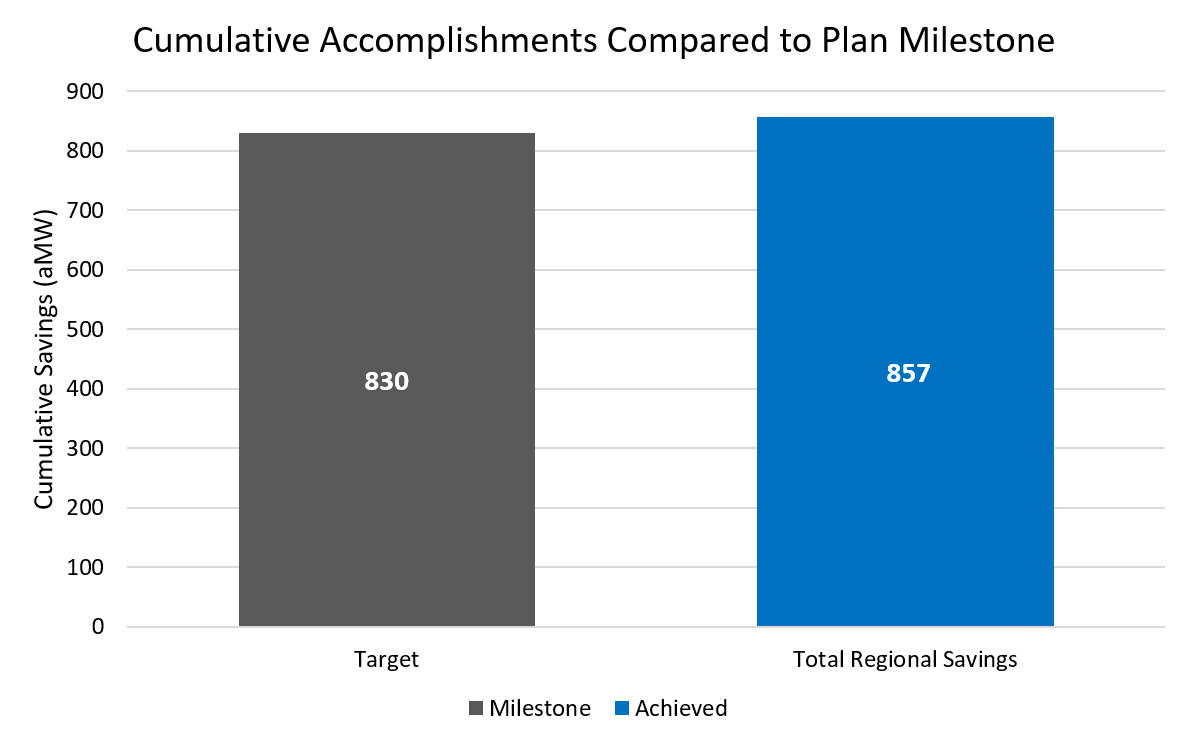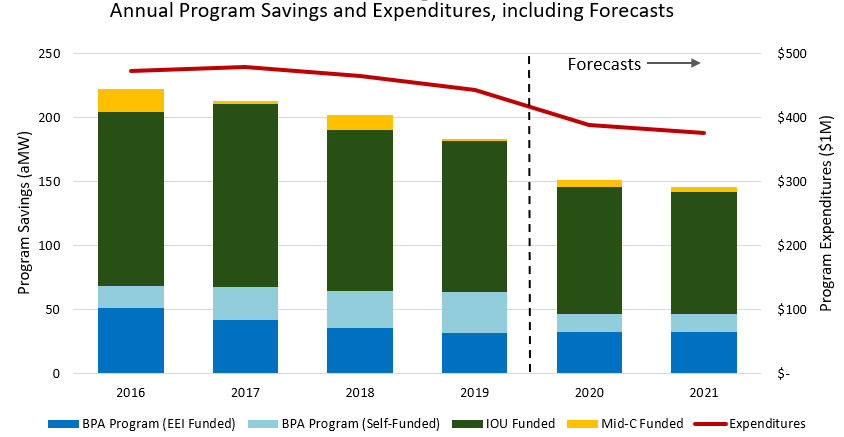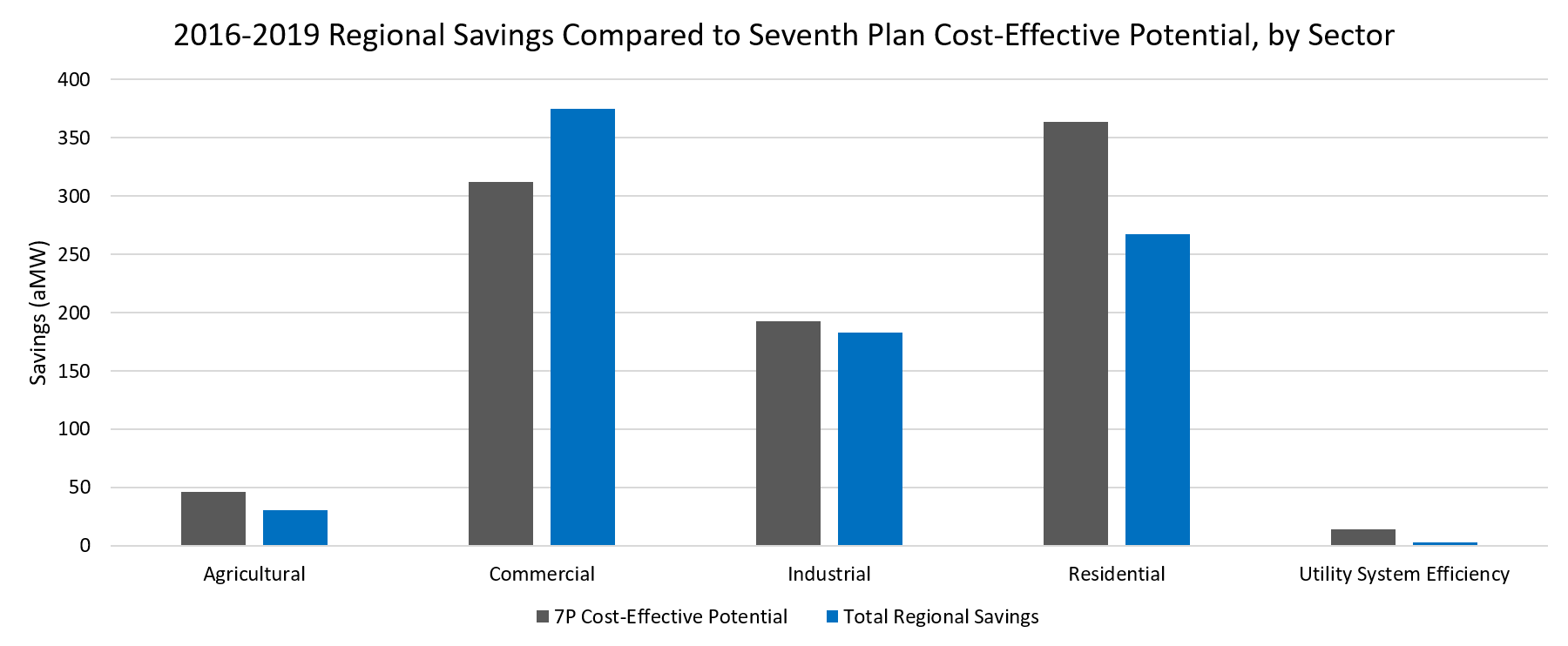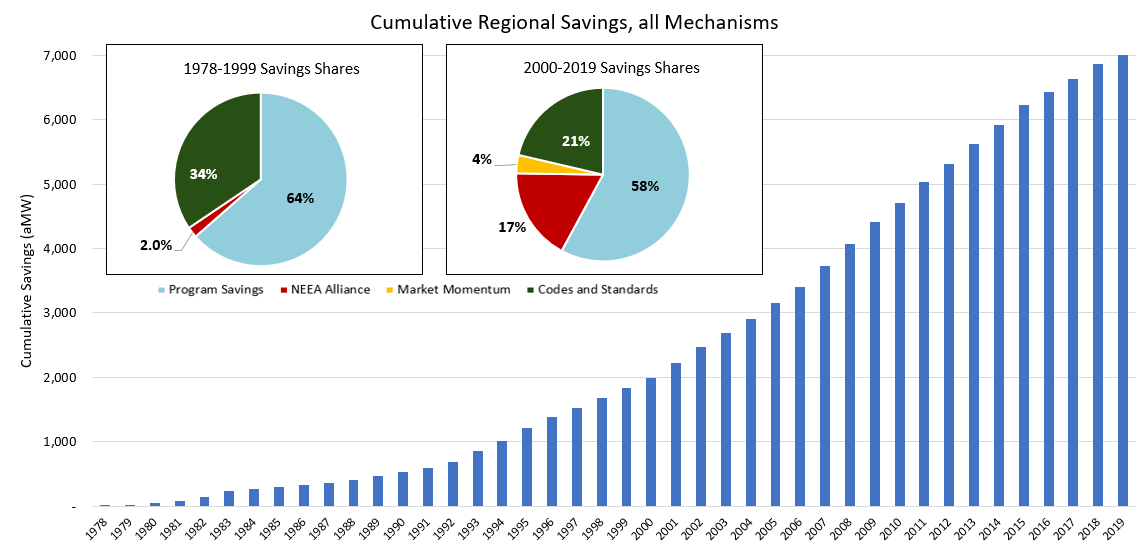In its charter the RTF is tasked with annually surveying the region’s utilities, Bonneville Power Administration, NEEA, and system benefit charge administrators like Energy Trust of Oregon on their efficiency achievements. The RTF supports the compiling of the data into a Regional Conservation Progress (RCP) report, and staff present it to the Council to offer a full picture of the region’s progress against the power plan’s efficiency goals.
Expand the ⊕ navigation above for other years' reports.
Cumulative Conservation Achievements and the 7th Plan
2019 RCP Workbook Presentation Submitted to the Council
As a region, over the last four years, the Northwest has saved 857 aMW of energy as a result of improved energy efficiency. These savings are a result of utility program savings, NEEA alliance savings, momentum savings, and savings from codes and standards with an adjustment for double and under counting. The chart to the right illustrates how these regional savings compare to the four-year conservation target of 830 aMW, set by the Seventh Power Plan.


Savings and Expenditures
The region is currently ahead of the Seventh Plan's regional 4 year milestone. However, in the last 2 years of the action plan period that remain the regional target ramps up significantly. As the chart to the left illustrates, the region has been seeing declining savings, in proportion with declining expenditures, from programs. Trends that are anticipated to continue into 2020 and 2021.
Significant Potential Remains

As in years past, the region has had great success achieving lighting savings across sectors. Despite this success, significant potential remains, especially in the residential sector, as seen in the above chart. Expanding to look at savings by end-use it becomes clear that there is significant untapped HVAC and water heating potential. A regional shift in emphasis towards these end-uses will help in meeting this potential.

Historical Regional Savings
Energy Efficiency has provided almost 7000 aMW of savings since 1978. It has helped the region avoid more than 22.2 million metric tons of carbon dioxide emissions and has saved the equivalent of 5.1 million homes' annual energy consumption. As the chart below shows, utility efficiency programs have been the key driver of energy savings in the region. In more recent years NEEA and their market transformation work has emerged as a significant contributor to savings.

Have questions? Please get in touch.


